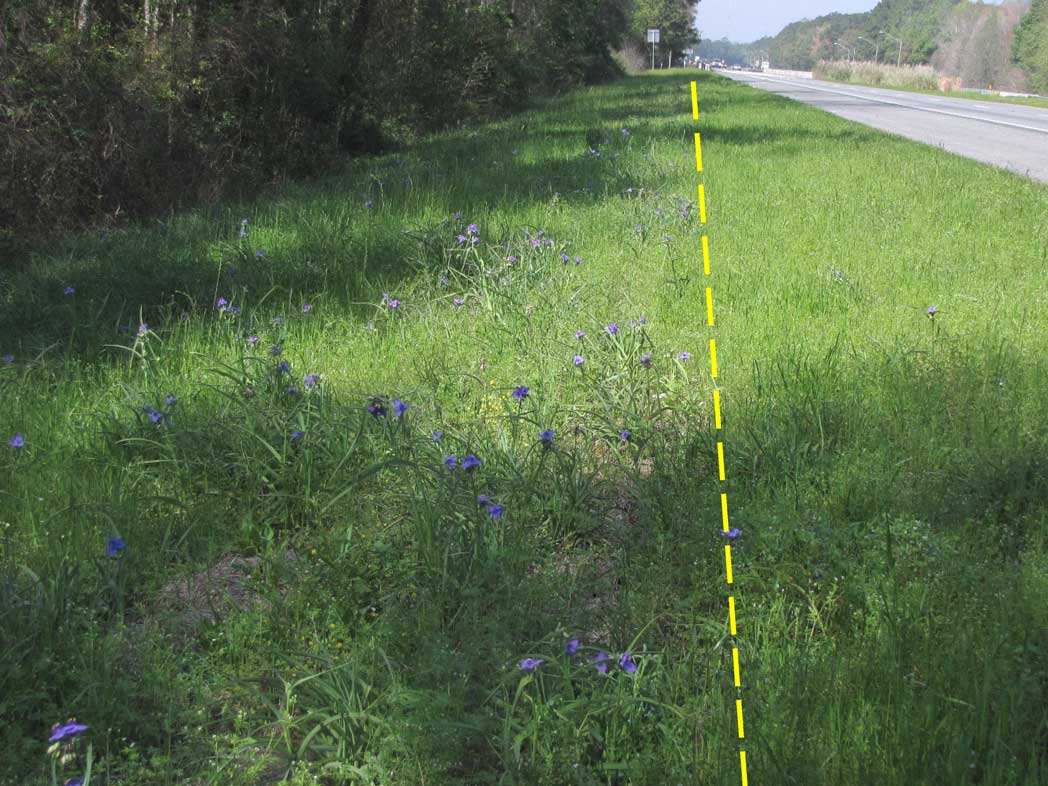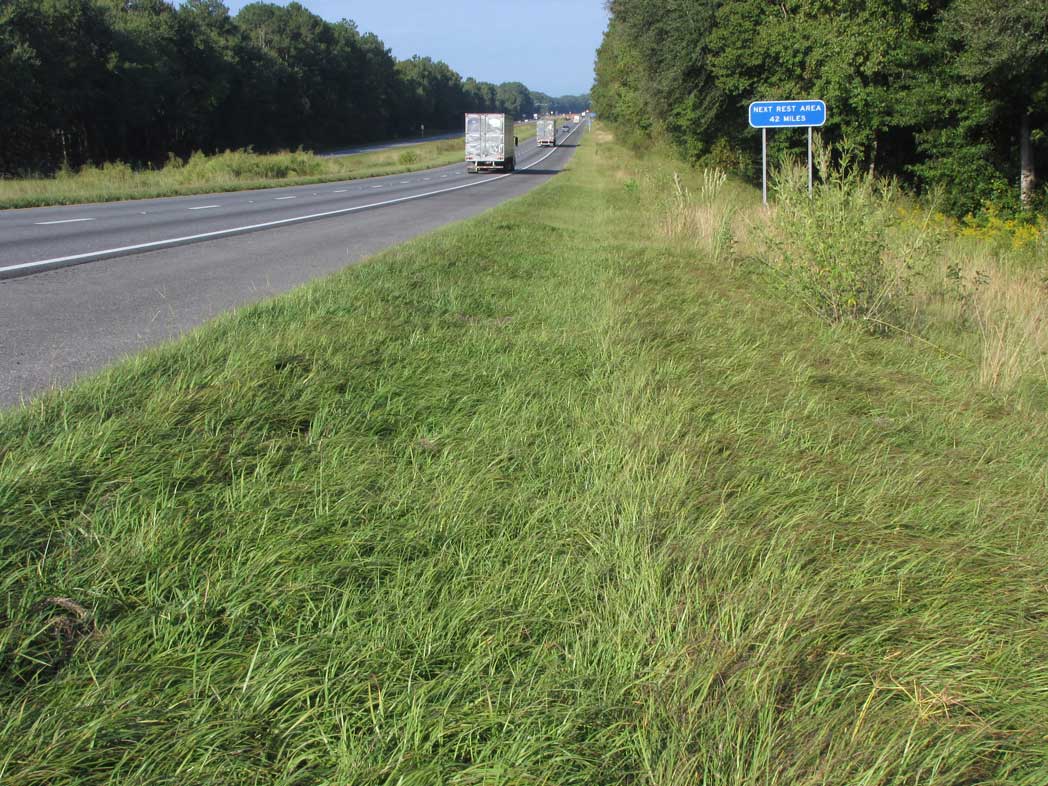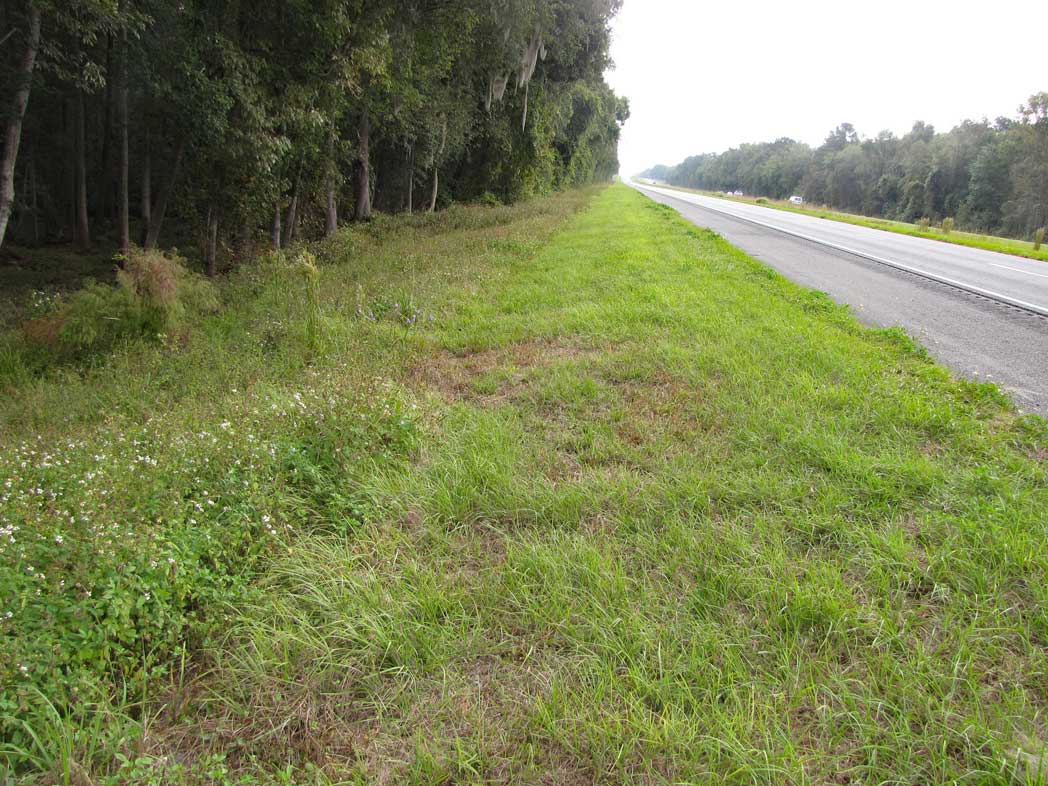Program Procedure
The Florida Department of Transportation (FDOT) enacted its first Wildflower Program Procedure in 2004 to prescribe the program’s requirements and responsibilities. In 2014, the Environmental Management Office and Office of Maintenance collaborated on a significant revision that emphasized management practices that sustain planted wildflowers as well as naturally occurring native flora and native plant communities. It also stressed the importance and responsibilities of the Office of Maintenance, including the designation of a Wildflower Coordinator in each FDOT district.
The Procedure was revised in November 2016 and again in 2022. In each case, the importance of reduced mowing and use of integrated vegetation management practices was emphasized as was the benefit of these management practices to pollinators.
Reduced Mowing
A 2014 report concluded that FDOT could reduce right-of-way (ROW) vegetation management costs by 30% simply by implementing sustainable management practices such as reduced mowing. The report also conservatively estimated that roadside vegetation along the state highway system would provide ecosystem services valued at about $1 billion if such practices were used.
Now-retired State Transportation Landscape Architect Jeff Caster presented the report’s findings at the May 2014 FDOT Executive Workshop. He proposed a 10% reduction in mowing in area and/or frequency, and noted that some rural roadsides could be mowed less without impacting safety or roadway operation (see Case Study: I-10 Madison County). Jeff also pointed out that a 10% reduction in mowing along rural roads (excluding asset maintenance) could reduce the department’s annual expenditures for mowing by more than $1 million.
With the varying roadside conditions, obligations and abilities of each District in mind, then-FDOT Sec. Ananth Prasad challenged Districts to reduce mowing by 10%, suggesting that they work with Jeff Caster to develop strategies and determine candidate sites.
It was agreed that:
- Each District would develop and implement a plan to reduce mowing area and/or frequency by 10%
- Roadside conditions would be monitored for two years and plans revised as needed
Using lessons learned, A Guide for Roadside Vegetation Management would be amended.
Does Reduced Mowing Affect Safety?
Concerns have been raised that reduced mowing might comprise safety of motorists and roadside maintenance personnel. In 2019, an FDOT consultant performed an exhaustive search of the literature and examined crash reports from 2011 through 2018, the period of greatest roadway mowing reduction in Florida. The results were compiled in the study, Safety Effects of Reduced Mowing.
Issues raised about the impact of reduced mowing on safety issues, for the most part, were not supported by the empirical evidence (data obtained via experimentation or observation, which is then recorded and analyzed). Findings showed:
- There is limited empirical evidence about negative impacts of reduced mowing on safety.
- One report noted the rate of spread of fire in the regularly mowed grass of the safety strip would be slower than in the taller grass which is only mowed once per year.
- There was no evidence that reduced mowing is a safety issue with respect to sight distance or obscured signage. Overgrown roadside vegetation (tree branches, shrubs and tall grass) was implicated as a factor in numerous crashes in Great Britain, but the only reduced vegetation management concern was budget cutbacks with regard to the trimming of tree branches and shrubs. Here in Florida, reduced mowing on state roads has not been implicated in any crash from 2011 to mid-2018 with respect to sight distance or obscured signage.
- The preponderance of empirical evidence does not support the belief that the likelihood of wildlife-vehicle collisions, especially deer-vehicle collisions, is increased in reduced mowing areas because of increases in palatable native vegetation that attracts wildlife to roadsides.
- Empirical evidence that reduced mowing improves safety was very limited.
Case Study: I-10, Madison County



In 2009, a four-year study was initiated in cooperation with the Central Maintenance Office and the District Perry Maintenance Office to evaluate the effects of decreased clear zone mowing to reduce expenses and conserve energy.
Clear zones are relatively flat, unobstructed rights-of-way on the outside of undivided roadways and the inside and outside of divided highways. They provide a safe place for motorists to pull over to regain control of a vehicle during an emergency. Vegetation established in the clear zone is selected and managed to stabilize soil and reduce erosion, thereby providing a safe haven for motorists. FDOT procedures require periodic clear zone mowing to reduce undesirable weed growth and encourage dense turf cover, which in turn stabilizes soil and reduces erosion potential. The test site was a 1-mile segment of Interstate 10 in western Madison County. Only 10- to 15-foot safety strips adjacent to the inside and outside lanes of pavement were mowed normally, and the entire clear zones (36-foot width or greater) were mowed once in the fall. After four years, there were no adverse impacts regarding erosion, safety, aesthetics or turf quality. Moreover, the modified mowing regime enhanced the overall roadside aesthetics in spring, thanks to an increase in the occurrence and density of native wildflowers.
For study details, see Madison County Energy Conservation Study — 2012-2013 Survey of Roadside Vegetation.

